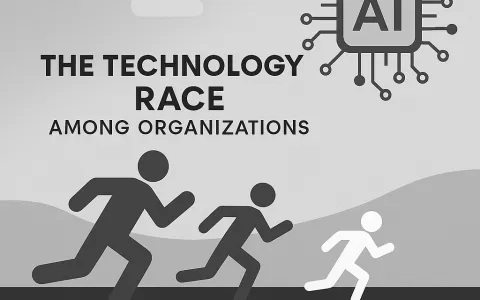In today’s digital landscape, simply having a website isn’t enough for businesses and organizations. A modern online presence must be more than a collection of pages filled with text, images, and videos. The shift from traditional websites to cloud-based web applications has become essential as consumers increasingly seek interactive, value-driven experiences online. This shift demands a functional web application that goes beyond design aesthetics to serve as an integrated, interactive hub that aligns with organizational goals and enhances user engagement.
The Limitations of Traditional Websites
Traditional websites, while suitable in the early internet days, can be restrictive in today's environment. These sites typically offer a static display of information: they’re good at telling users who the organization is, what it does, and how to contact it. However, they fall short when it comes to delivering dynamic, interactive experiences. With the advancements in web technology and rising customer expectations, businesses need to look beyond such basic frameworks.
Here’s a scenario: imagine a university with a legacy website that’s essentially a digital brochure. Users can read about departments, find contact information, and perhaps browse a few course descriptions. However, in an age where students expect to enroll online, access grades, participate in virtual courses, and connect with faculty, such a limited experience no longer meets the needs of today’s tech-savvy users.
The Modern Solution: Cloud-Based Web Applications
A cloud-based web application allows organizations to provide a more robust, interactive experience. By leveraging the cloud, businesses can offer features that transform the way users engage with their brand online. Consider the example of a university with an upgraded, cloud-based web application. Instead of a static page with general information, this new platform offers:
- Online course enrollment where students can select, register, and pay for classes with ease.
- Student portals that allow secure access to grades, academic records, and direct communication with faculty.
- Virtual classrooms and online learning modules that support remote education and ongoing professional development.
- E-commerce capabilities that allow students to purchase textbooks, register for events, or pay fees online.
These functionalities demonstrate how a cloud-based approach can meet evolving user expectations, transforming a simple website into a comprehensive digital ecosystem that adds value to the organization and its customers alike.
Enhancing Brand Engagement and Retention
A modern web application keeps users within your ecosystem, ensuring they interact with your brand rather than diverting to external platforms or third-party services. In a sea of online alternatives and social media platforms, retaining user attention on your site is invaluable. For example, a university with an integrated student support system and knowledge base on its cloud-based platform reduces the likelihood that students will seek answers elsewhere.
When users stay on your platform, you control the entire narrative around your brand. You can deliver targeted messages, recommend relevant content, and offer personalized interactions that build trust and loyalty. This level of brand engagement is far more impactful than merely appearing as one link among many on a search engine results page.
Leveraging AI Integration for a Smarter, More Engaging User Experience
With the increasing integration of AI technologies like ChatGPT, a cloud-based web application can leverage these tools to offer dynamic, personalized interactions that enhance user experience. AI-powered chatbots, personalized recommendations, and automated responses are just a few ways businesses can cater to individual user needs in real-time. By embedding AI capabilities directly within your web application, users receive intelligent assistance without leaving your platform, creating a more seamless, branded experience. This adaptability not only meets user expectations but also positions your organization at the forefront of technological innovation.
The Business Benefits of a Cloud-Based Web Application
Beyond customer engagement, cloud-based web applications offer several critical advantages for organizations and businesses:
- Scalability: Cloud-based applications grow with your organization. As demand fluctuates, the cloud infrastructure adapts, making it easier to accommodate increased traffic or expand services without investing in additional hardware or complex upgrades.
- Data-Driven Insights: With cloud-based systems, organizations can gather valuable data on user behavior and preferences. This data, when analyzed, provides actionable insights into what works and what doesn’t, allowing for more informed decision-making and continuous optimization of user experience.
- Cost Efficiency: While building a cloud-based web application might require more upfront investment than a traditional website, the cost savings over time are significant. Cloud solutions reduce the need for physical servers and enable organizations to pay only for the resources they use, minimizing overhead costs.
- Enhanced Security and Compliance: Cloud providers often offer higher security standards than what most organizations can achieve on their own. This is particularly important for industries like education, where data privacy and regulatory compliance are paramount.
- Seamless Integrations: Cloud-based applications can integrate seamlessly with other business systems, such as CRM, ERP, and data analytics platforms. This centralizes operations, improves workflow efficiency, and provides a single, cohesive digital environment.
Case in Point: A Cloud-Based Platform for Universities
Let’s return to the example of the university. Suppose it decides to move beyond a static website and develop a cloud-based application. Now, instead of visiting a brochure site, students can log in to a secure portal where they can go through the admissions process, access grades, manage course registrations, and make payments. Faculty and staff can also benefit, using the platform to manage course content, track student progress, and engage in professional networking within academic forums.
This comprehensive, interactive platform serves as a one-stop solution for students, faculty, and administrative staff alike. It keeps users engaged within the organization’s digital ecosystem, minimizes the need for external resources, and builds long-term loyalty.
The Future is Cloud-Based
In an era where users expect immediate, personalized, and interactive experiences, cloud-based web applications are no longer optional—they’re essential. Traditional websites served a purpose in the past, but today’s organizations need a platform that adds real, tangible value for their users. From e-commerce and student portals to online courses and customer service, a cloud-based application transforms a simple website into a powerful business tool.
For organizations and businesses looking to remain competitive and relevant, the choice is clear: adopt a cloud-based web application and create a meaningful, engaging experience that not only meets but exceeds user expectations. By making this shift, companies are positioned to retain control of their brand message, foster deeper connections with their audience, and drive long-term growth in the modern digital age.


